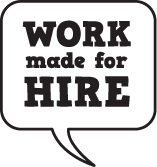How to Write Better Client Emails
If you want to know how to write a better client email, an email that will be understood and appreciated, an email whose directions will be followed, scratch these words out in a bold color on fine paper and hang it right above your desk:
It’s not about what you want to say, it’s about what you want them to hear.
Too many people jot off emails to clients in language that makes perfect sense to them and never stop to wonder if their client will be able to understand what they’ve written.
Jargon is a common misstep; assuming that your client knows exactly what you mean when you say “acceptance testing” or “tumbnails.” Jargon can be helpful when talking to other professionals, not so great when talking to a client.
Back in the olden days I worked in an IT department managing the company’s IT contracts. I still feel pretty good about my handle on tech speak. I can leverage the cloud with the best of them and know what that means.
I’ve since moved on and am now a sometimes client of that same IT department. I put in a request for a change a while back and decided to follow up this week and see how things are going. This is the email I got back:
The development for this story was accepted during planning for Sprint 64. (Included in acceptance criteria are tests.)
I understand all of the words in those sentences. I can even tell that if I were on the dev team this would likely make sense.
But I’m not on the dev team. I’m the client. And I have no idea what this email is supposed to mean to me. (Especially since I don’t think my request has anything to do with stories.)
Now this is an extreme example, granted, and I don’t usually like to pick on the guys in IT, but it’s a good reminder that when writing emails to your clients it’s important to pay attention to how you are phrasing your message.
It’s not about whether you understand what you’re saying; it’s about whether they will understand it.
- Avoid jargon when possible; when that’s not possible, provide brief definitions of what the word means in your industry.
- Don’t assume they’ll understand what “normal” anything is in your industry.
- Short, complete sentences are your friends. Extraordinarily long and drawn out sentences with dependent clauses, such as this one here, particularly when there are multiples, and vocabulary that would make your thesis adviser proud, are not.
- If you use examples to explain concepts in your work, try to use examples that will be familiar to the client and their work.
Writing better client emails means writing emails that your clients will understand, and that means using language that makes sense to them. Taking a few extra minutes to read through an email before you hit send can help make sure you’re sending emails to clients that they’ll understand, find useful and appreciate.
Categories: The Rest




